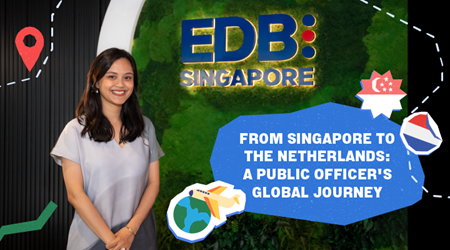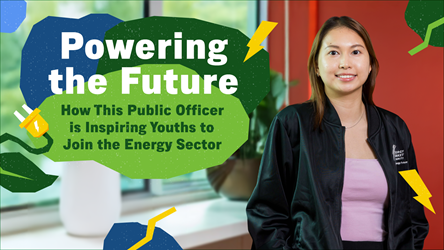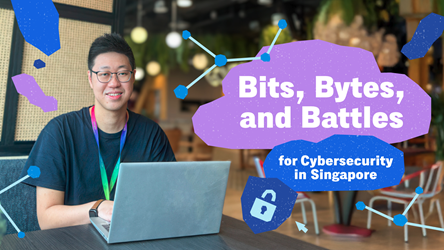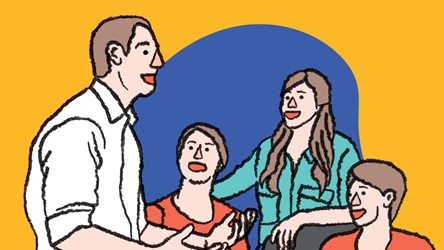Heritage For All: Buddying Up And Innovating To Engage New Audiences
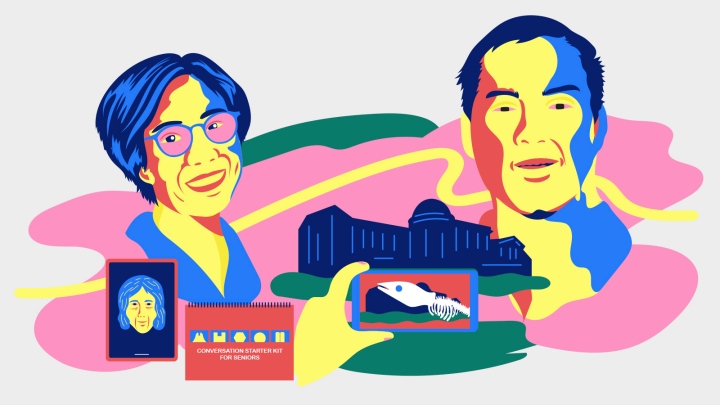
Amanda Claire Chan
Senior Manager, Silver Hubs@Heritage Institutions
National Heritage Board
A curiosity about the ageing population in Singapore and a final-hour chat with her grandmother inspired Amanda Chan to change how seniors experience heritage.
Amanda leads the NHB’s Silver Hubs@Heritage Institutions initiative, which aims to make Singapore’s museums and heritage institutions more accessible to seniors. Before this initiative, the elderly folks’ encounters with museums were mainly through guided visits.
Seeing the potential for the NHB to offer more, Amanda thought up ways to engage this audience group more meaningfully. She made cold calls to healthcare and social service organisations to share her ideas and discuss collaborations, but often faced scepticism.
With perseverance, and by helping others see the bigger picture of serving the elderly differently, she was able to get the National Council of Social Service and four social service organisations to co-create a Conversation Starter Toolkit for Seniors.
The kit features carefully chosen images from the National Collection, such as landmarks, scenes and items used in the 1950-60s. The images are paired with structured questions to facilitate meaningful conversations among seniors, their caregivers, and between seniors and young volunteers.
Through such interactions, the seniors can share their stories and life experiences, relive treasured memories and pass down values and legacies to the younger generation.
The toolkit was made possible through Amanda’s tenacity to pursue partnerships and overcome the reservations that potential partners had. The toolkit prototype also went through many rounds of testing with seniors, caregivers, volunteers and observers. Their feedback was essential to make the final product a valuable and usable one.
Now, the toolkits are in high demand. There are 2,800 kits available at more than 30 healthcare and social service organisations, as well as the NHB’s three heritage institutions. The NHB is presently working on thematic content for a new series of toolkits and translated versions are in the works.
Jervais Choo
Deputy Director (Organisational Design and Innovation)
National Museum of Singapore, National Heritage Board (NHB)
If you’ve visited the National Museum of Singapore (NMS) and been pleasantly surprised by its high-tech, immersive exhibitions, you have Jervais Choo (and the partners he works with) to thank.
Going beyond his job scope, he started the DigiMuse programme in 2016 for museums to explore ways to use new, emerging technologies and partner with private sector groups for digital innovation.
As Jervais recalls: “It started as a gut feeling that there’s a lot more our museums can do to engage with frontier technologies, and I wanted to change the perception of heritage and history being rooted in the past. With this simple idea, and with my management’s support, I secured some funds to experiment, and the projects just started taking off.”
The result? Chatbots such as Heritage Granny, a Facebook messenger bot built with Bus Uncle Company (of Bus Uncle chatbot fame), and a tie-up with art collective teamLab for the 15-metre high Story of the Forest, featuring digital artwork inspired by the museum’s William Farquhar Collection of natural history drawings.
The NMS is also one of the first museums in the world to develop an augmented reality (AR) experience on the Google Tango platform, prototyped as an AR architectural tour. With AR, visitors were able to explore the museum’s architectural heritage and past displays on their mobile devices. The museum also has a dedicated gallery, Gallery 10, for digital works and creation.
More importantly, DigiMuse has changed how museum professionals and visitors perceive how museums can use technology to engage audiences, whether on-site at museums or beyond. Jervais has also been invited to share the groundbreaking approach at museum forums and conferences internationally – including a TEDx event in York, UK – placing the NHB’s museums at the forefront of museums that actively engage with technologies.
With plenty of ideas and no shortage of collaborators both locally and internationally, the NHB continues to explore new ways to reach more people through digital means. From personality-filled chatbots to explorations in immersive technologies, the next steps aim to build on these experiments to develop meaningful solutions that can better engage with audiences and increase knowledge on all things to do with Singapore’s history and heritage.
With Jervais’ mindset of “better to try and fail, than to not try at all”, he now leads a new office for public sector transformation at the NHB, working to ramp up a culture of innovation for the organisation and the culture sector as a whole.
The gist
- Keep up with trends
Amanda’s awareness of Singapore’s ageing population and Jervais’ interest in emerging technologies created game-changing initiatives for the heritage sector. - Be persistent in creating partnerships
Tie-ups with other organisations and agencies can spark meaningful outcomes and delightful experiences for new audiences. - Successful projects require repeated testing
For best results, ideas and products should go through several rounds of testing with relevant stakeholders.
- POSTED ON
Sep 24, 2019
- TEXT BY
Tuber
- ILLUSTRATION BY
Mushroomhead




